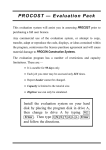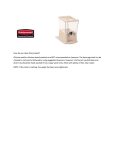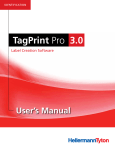Transcript
Pipelaying instructions for Fuchs spigot & socket pipe 1. Cutting steel water pipe PE Coated, cement mortar lined steel water pipe A. Cut through the pipe using an angle grinder or pipe cutter with a disc suitable for steel and cement mortar. B. Use a propane burner with a large burner head to heat the cement mortar inside the spigot end. Keep the flame moving all the time. 5 Drilling and tapping We recommend the use of saddles when tapping ferrules into the pipes. However, if you are going to tap straight into the pipe, do not remove the PE coating. Using a Talbot machine, hand drill and tap using a drill and tap that has perfectly clean threads (i.e no dirt or grit in them). Drill and tap slowly and evenly, manually. Do not use a powered drill because the reverberation will make the hole too big resulting in a loose ferule. C. When the PE is hand hot, make an incision in the PE coating around the circumference and along the length to be stripped. The distance between the pipe end and the circumferential cut depends on the socket insertion depth. D. Peel off the PE coating. 2. Cut bevel Cut a 650 bevel (approx) in the spigot end. 3. Clean Joint Clean the joint thoroughly with a rag and then apply plenty of grease to the gasket. 6. Tyton Anchor release tool. For pulling apart tyton anchor gaskets and tyton DKM gaskets, rather than having to cut the joint out in the event of a leaking gasket. The release tool needs to be used in conjunction with the pipe pulling tool which can be reversed in order to pull joints apart. 7. Couplings 4. Connecting the Spigot & Socket Pipe A pipe puller (optional) can be used to join the two pipe ends and also pipes to fittings. Before attaching a coupling, take off the required amount of PE first (see over). The coupling gives a better seal on to the steel pipe rather than on the PE coating.








